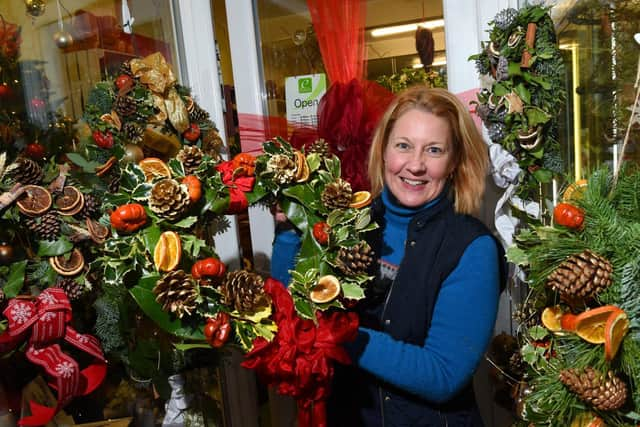Holly is the usually the festive garland of choice but Roger Ratcliffe speaks up for its Christmas carol counterpart - the ivy
Perhaps ivy’s old association with melancholy still exists in many minds.
The first verse of the carol gets ivy wrong. “The holly and the ivy, When they are both full grown, Of all the trees that are in the wood, The holly bears the crown”, suggests that ivy is a tree, but everyone knows it as a climbing shrub, and it is pretty good at creeping up and virtually overwhelming even the tallest trees.
Advertisement
Hide AdAdvertisement
Hide AdThat’s possibly where the old confusion comes from, and the writer of the carol thought these were ivy trees.


In rare instances, it has been known to reach up from a woodland floor without any support, but on the one occasion I have seen this happen it most definitely did not qualify as a tree by my understanding of the word.
Ivy is not a parasite, and the danger to any tree it inhabits comes not from depriving it of nourishment but of the ivy turning it into the landlocked equivalent of a fully-rigged ship, making it vulnerable to uprooting by strong winds.
Of course, ivy also lets rip on buildings and cliffs – there are records of it reaching over 100ft in height – and I’ve seen an abandoned tractor totally covered with ivy.
Advertisement
Hide AdAdvertisement
Hide AdOne wall of my house was so afflicted by ivy it eventually damaged a window frame.
During a recent walk near Fountains Abbey I encountered a wonderful curtain of ivy which completely obscured a wall.
It was a mild November day and the ivy was swarmed with insect life, which meant there was the inevitable wren busily enjoying this all-you-can-eat buffet.
I always associate wrens with ivy, and artists love putting them together.
Advertisement
Hide AdAdvertisement
Hide AdBesides the winged insects which feed and breed around ivy, the spaces between leaves and the climbing stems are often filled with the webs of opportunistic spiders, another favourite wren food.
Ivy is an important plant for birds, not just because it has juicy greenish-black berries which thrive in winter and provide food when the autumn crop of rowans, haws and elderberries has run out. In spring the woody creepers support the nests of wrens, robins and dunnocks.
Ivy’s ability to overwhelm trees may not be good for them, but the thick mats of evergreen leaves provide sanctuary for tawny owls. My neighbour has such a tree, and from deep within its drapes in autumn and winter usually come the territorial calls of a male, although so far this year there hasn’t been a single hoot.
While ivy has long been associated with Christmas, and appeared on Victorian Christmas cards, it has fallen out of favour with card makers because no one finds ivy with black berries very cheery at Christmas.
In East Anglia, though, children used to collect ivy and paint the berries red.
Comment Guidelines
National World encourages reader discussion on our stories. User feedback, insights and back-and-forth exchanges add a rich layer of context to reporting. Please review our Community Guidelines before commenting.